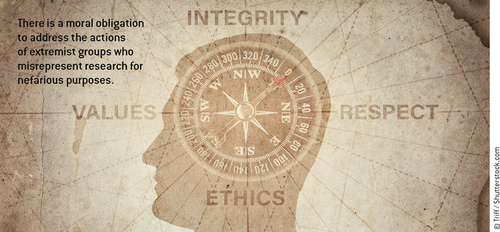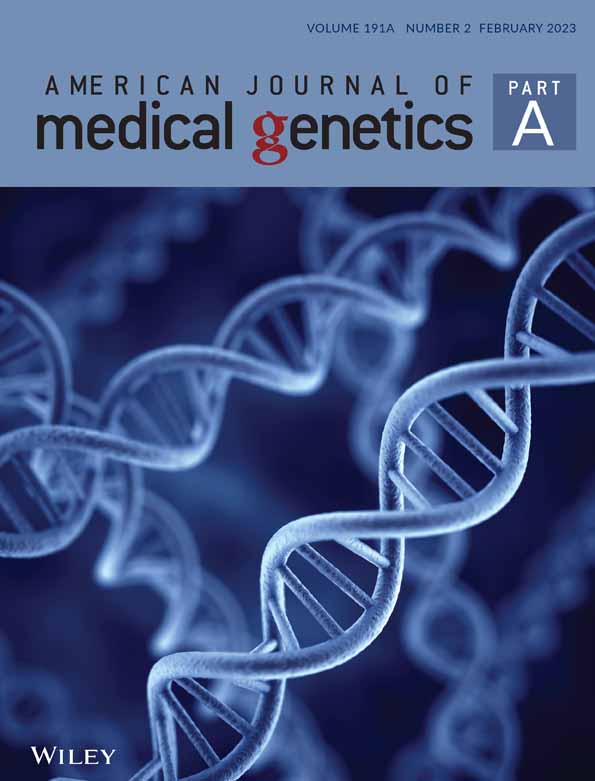Addressing the Weaponization of Genetic Research
Extremist groups misappropriate genetic research to support their ideologies, and geneticists must rethink how their research is conducted and communicated
In the spring of 2022, a white teenager named Payton Gendron opened fire in a Buffalo, New York, supermarket, killing 13 people, most of whom were Black. The teenager's violent rampage was subsequently revealed to have been rooted in white supremist ideology in his 180-page manifesto, in which he espoused his belief in the far right “Great Replacement” conspiracy and contended that the U.S. should belong to white persons only (Hajela 2022). He also noted that, in his planned horrific act, he sought to inspire others to carry out similar attacks.* Perhaps most disturbing of all was the fact that Payton Gendron attempted to use genetic research to justify these murders and white nationalist ideology in general. He cited, for example, a 2008 report on human genetic variation that suggested genetic differences among 7 continental populations but lacked proportional representation from Africa (Li et al, 2008) (Carlson et al, 2022).
It is becoming clear that the current national resurgence of white supremacy is being driven in part by extremist groups who co-opt scientific findings and genetic research and “interpret” these data as support for their ideology. A 2014 study on the origins of present-day Europeans, for instance, is regularly invoked and misused by social media users with links to neo-Nazi and supremacy groups (Lazaridis et al, 2014). In this sense, modern-day genetic research is being “weaponized” with hateful intent, and clearly, the scientific community needs to confront and counter this dangerous trend. Efforts thus far have been insufficient, however, say the authors of a newly published commentary (Carlson et al, 2022).
Taking a Stance
Without being overly prescriptive regarding steps and outcomes, Dr. Carlson notes that “we can certainly take an active role in learning about how weaponization/misinformation occurs—through conducting formal meta-research on the topic and staying informed about how and where our research gets shared—and adapting our paradigms of research/communication accordingly.”
Although he does not see the weaponization of research as something that can be “controlled,” Dr. Carlson stresses that the fundamental aim for scientists is to generate and spread knowledge. “So, when that knowledge gets corrupted or misinterpreted in some way, we should question what aspects of our work made it susceptible to corruption/misinterpretation,” he concludes.
Although the misappropriation of research has ramped up during the past few years, it is not a new phenomenon. Since World War II, scientific research has been used to further the ideology of far-right groups. In the late 1970s and early 1980s, the authors note, a neo-fascist organization in the U.K. called the National Front produced a series of articles that presented findings from mainstream research as evidence that racism was scientifically justified. During the past few years, however, meta-research and sociological studies have demonstrated that co-opting papers and concepts in disciplines ranging from human genetics to neuroscience is not just happening “at the fringes.”
Counteracting Weaponization
One obstacle to addressing research misappropriation is that current international efforts to establish catalogues of human genetic variation still disproportionately represent populations outside of Africa, the continent that harbors the greatest human genetic diversity. Of the 52 groups included in the Human Genome Diversity Project, only 7 are from Africa. The resulting small sampling size may then be represented in graphs or other figures that downplay the extent of genetic diversity in African populations.
In an ideal world, all populations would be represented proportionately. For now, however, geneticists must think carefully about which data they select for analysis and consider how these choices could be misconstrued.
Another approach would call for an overhaul of the visual presentation of analyses. For example, articles about human population genetics routinely include figures that show clustering of genotype data using analysis techniques such as principal components analysis, or the distribution of ancestry that is inferred from a modelling approach called structure and admixture. These figures help specialists communicate their results to the field but are easily co-opted by people with extremist ideologies. A practical way to squelch the decontextualization and misinterpretation of scientific figures would be to develop standards for visualizations.
Commenting on the paper, Alice B. Popejoy, PhD, Assistant Professor in the Division of Epidemiology at the University of California, Davis, suggests a halt to conducting comparative genomic analyses for complex traits between racial groups, and/or to twisting a race or ethnicity category to make it sound more scientific (e.g., ‘Black or African American' or ‘African ancestry') and then reporting such broad group-level differences. “Race and ethnicity are important proxy measures for the impact of racism, such as looking at disparities and/or resilience in different circumstances, but they are not appropriate to use as proxy measures for genomic background,” she emphasizes. “Even genetic ancestry is problematic as a proxy for this because all humans are related and can be traced back to a single ancestral origin in Africa. So, it's relative, fluid, and reference- and context-dependent.”
Dr. Popejoy also points out that for complex traits, such as those in which environmental factors play a role, broad social and cultural categories are expected to show correlations with social determinants of health. “These, in turn, drive systematic differences in complex disease risk due to differences in environmental exposures,” she explains. “Thus, we can expect a multitude of erroneous statistical associations to show up when examining complex traits by racial or ethnic groups and throwing genomic variation into the model may even yield some significant results.”
She adds, “If we do not want our science to be weaponized by white nationalists and others who seek to cause harm by co-opting genetic research, the solution may be painfully simple: We must root out the inherent racism lurking in our methods and unconscious belief systems, trust our colleagues in the social sciences and humanities when they encourage us to reconsider certain approaches, and adopt a posture of humility and curiosity about how we might do things differently—more precisely and mindfully—moving forward.”
* Payton Gendron has pled guilty to all state charges in the shooting, including murder, terrorism, and hate crimes.





